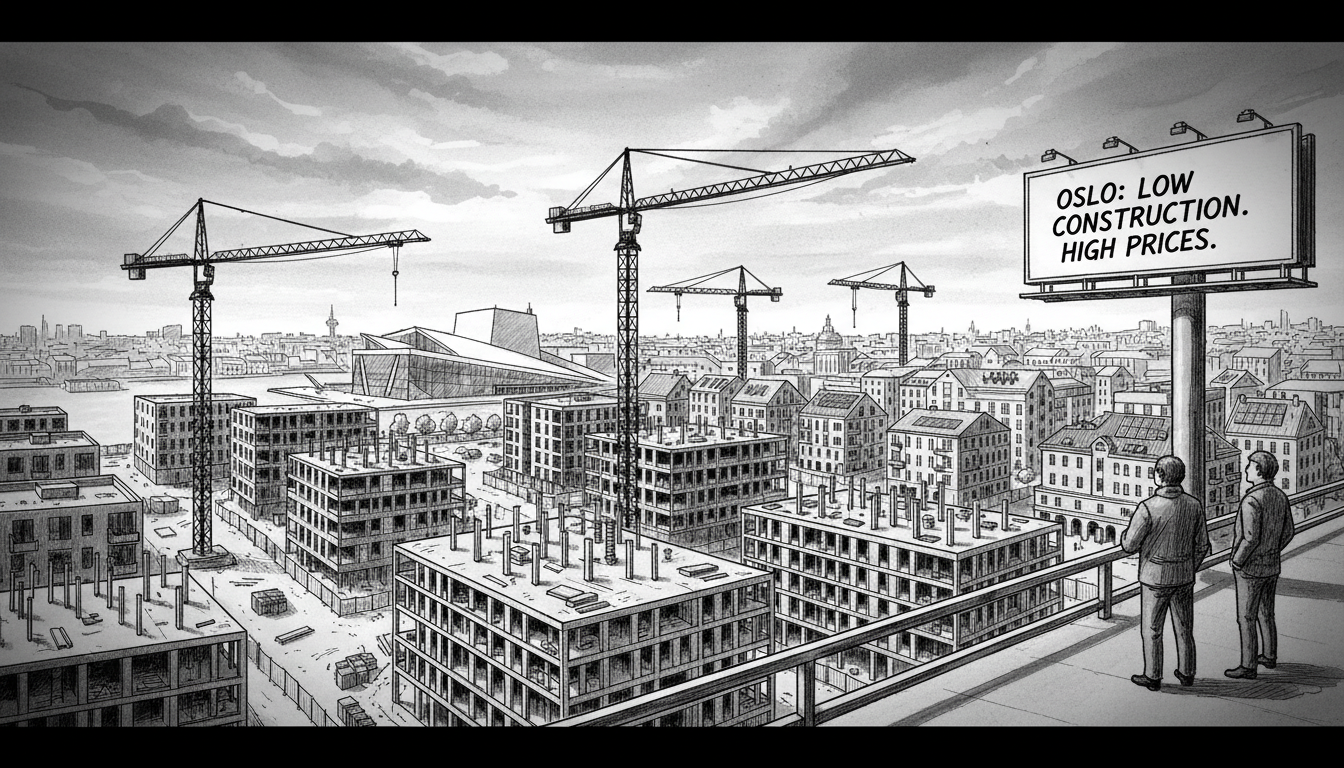Oslo confronts a deepening housing crisis as construction activity reaches historic lows. The Norwegian capital's building cranes dominate the Bjørvika skyline, yet residential development continues to decline. This contradiction reveals fundamental challenges in Norway's housing market that extend beyond Oslo's city limits.
Brokerage firm Røisland & Company monitors market developments closely. Their data shows minimal new housing projects entering the construction phase. High prices and rising interest rates deter both buyers and developers from initiating new residential projects.
The situation represents a dramatic shift from previous housing challenges. Earlier constraints involved limited available land for development. Current obstacles stem from financial pressures affecting the entire Norwegian real estate sector. Construction costs have increased substantially across major Norwegian cities.
Norwegian housing policy traditionally emphasized new construction to meet population needs. The current slowdown threatens this approach. Parliament members express concern about long-term consequences for urban development. Some Storting representatives call for intervention to stimulate construction activity.
International observers watch Oslo's housing trends closely. Norway's capital often signals broader Scandinavian real estate patterns. The current construction decline could influence housing policies throughout the Nordic region. Foreign investors monitor these developments for market implications.
The government faces pressure to address the construction slowdown. Previous administrations focused on land regulation and zoning reforms. Current challenges require different solutions targeting financial barriers. Policy makers must balance market stability with housing accessibility concerns.
Oslo's situation reflects wider European urban housing pressures. Major cities struggle with similar construction and affordability challenges. Norway's response could provide lessons for other nations facing parallel issues. The coming months will test the government's approach to housing policy reform.
What does this mean for Oslo residents? Housing availability will likely tighten further. Rental markets may experience additional pressure. Young families face particular challenges entering the housing market. The construction decline affects multiple segments of Norwegian society.
The government must act carefully to avoid exacerbating existing problems. Quick fixes could create new imbalances in the housing market. Sustainable solutions require coordinated action across multiple policy areas. Norway's approach to this challenge will shape its urban development for years.
Norway oil industry connections remain relevant here. Energy sector wages influence housing prices in major cities. Petroleum industry professionals compete for limited housing stock. The interconnection between Norway's key industries and urban development continues to evolve.
Oslo's construction slowdown presents both challenges and opportunities. The pause allows for reflection on sustainable urban growth patterns. Future development can incorporate lessons from current market conditions. Norway's capital may emerge with improved housing strategies from this period of constraint.

